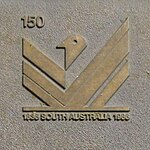Parliament House, Adelaide
1939 establishments in AustraliaAdelaide Park LandsAustralian National Heritage ListBuildings and structures in AdelaideGovernment buildings completed in 1874 ... and 8 more
Government buildings completed in 1939Government buildings in South AustraliaLegislative buildings in AustraliaNeoclassical architecture in AustraliaParliament of South AustraliaSouth Australian Heritage RegisterTourist attractions in AdelaideUse Australian English from April 2015

Parliament House, on the corner of North Terrace and King William Road in the Adelaide city centre, is the seat of the Parliament of South Australia. It was built to replace the adjacent and overcrowded Parliament House, now referred to as "Old Parliament House". Due to financial constraints, the current Parliament House was constructed in stages over 65 years from 1874 to 1939. Guided public tours of the building are held on weekdays at 10am and 2pm, except when the Parliament is sitting.
Excerpt from the Wikipedia article Parliament House, Adelaide (License: CC BY-SA 3.0, Authors, Images).Parliament House, Adelaide
Festival Plaza, Adelaide Adelaide
Geographical coordinates (GPS) Address External links Nearby Places Show on map
Geographical coordinates (GPS)
| Latitude | Longitude |
|---|---|
| N -34.921096 ° | E 138.598554 ° |
Address
Parliament House
Festival Plaza
5000 Adelaide, Adelaide
South Australia, Australia
Open on Google Maps







